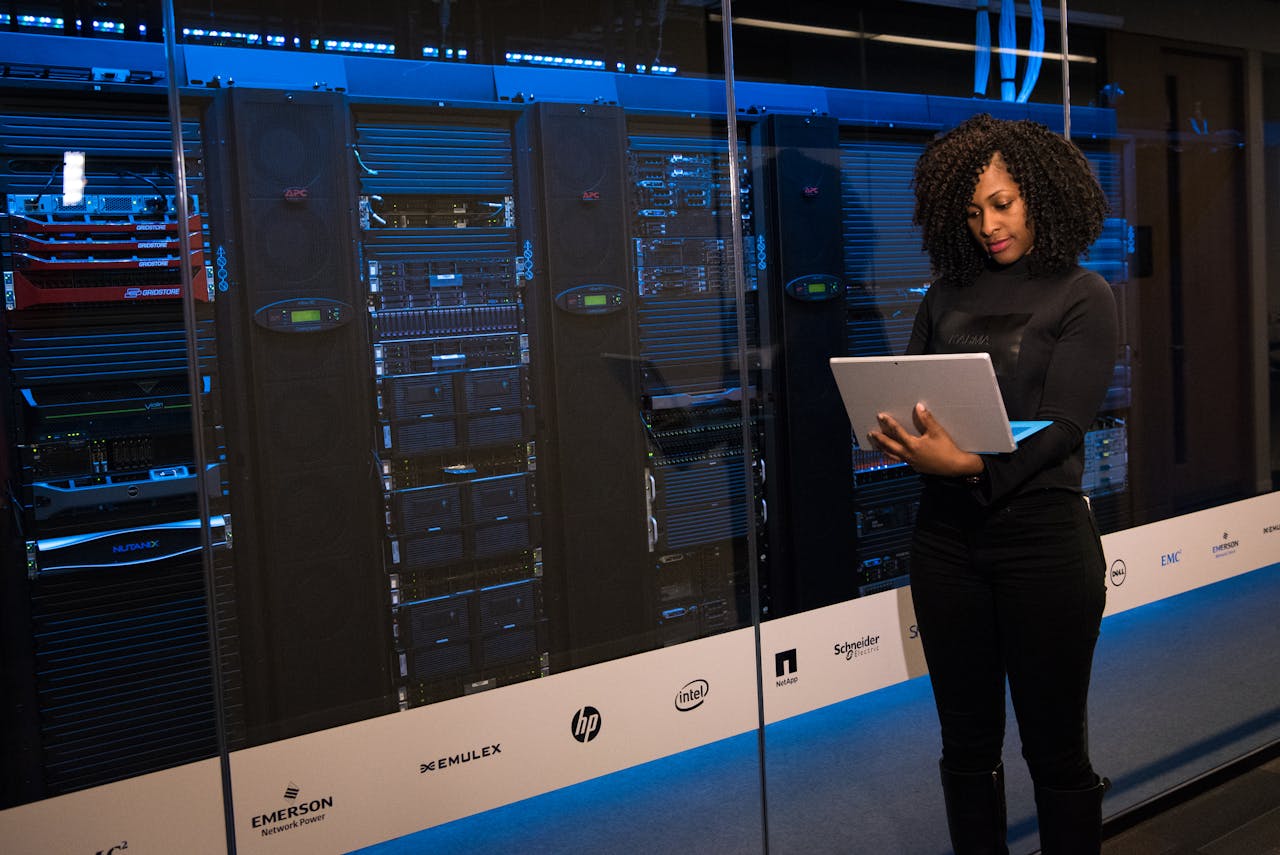Cybersecurity trends are continuously shifting. Some trends bring innovative opportunities for stronger protection and operational efficiency through advanced cybersecurity solutions, while others introduce fresh challenges that require attention.
Below, we explore the most pressing cybersecurity trends you must keep on your radar and explain how staying informed can give your business a critical edge.
Why Knowing Cybersecurity Trends Matters for Business Leaders
Cybersecurity trends represent the evolving landscape of digital risk management and defense strategies that directly affect how businesses operate and compete.
When you understand how security technologies, regulatory frameworks, and cyber risk behaviors are changing, you can anticipate challenges before they materialize into incidents, rather than reacting after the fact. This forward-looking insight helps you align your cybersecurity posture with the realities of the market and your industry, ensuring that your defenses, policies, and workforce training remain relevant and effective.
Quick Cybersecurity Trend Checklist: Are You Prepared?
- Are your cloud backups secure, tested, and prioritized by data importance?
- Are you compliant with evolving data privacy regulations?
- Does your cybersecurity meet current cyber insurance requirements?
- Is your team trained on the latest cybersecurity threats?
- Do your defenses include AI-powered threat detection?
- Are you prepared for advanced threats like deepfakes and MFA fatigue?
If you answered “no” to any of these, it’s time to reassess your strategy. Talk to us today to ensure your cybersecurity posture is optimized and aligned with the latest industry standards.
10 Emerging Cybersecurity Trends Shaping the Future of Business Protection
Cybersecurity trends encompass both emerging developments and evolving threats. Here are the most critical cybersecurity trends that you should watch out for:
1. Cloud Security
With more businesses migrating to cloud platforms and hybrid work models becoming the norm, data backup has emerged as a vital trend within cloud security. Businesses are increasingly relying on cloud-based backup solutions to create secure, off-site copies of critical data, ensuring fast recovery if original files are lost, corrupted, or compromised.
To ensure resilience against disruptions, today’s best practices emphasize backup redundancy, which safeguards data while keeping it easily recoverable. However, a key challenge remains: guaranteeing that backups are not only complete and accurate but also readily accessible when disaster strikes.
In response, leading organizations are implementing scheduled backup routines combined with rigorous recovery testing to maintain reliability. They also prioritize verifying data integrity to avoid issues with missing or corrupted files during restoration.
Moreover, intelligent backup strategies now focus on prioritizing data based on its organizational impact, ensuring the most critical information receives top protection.
2. Data Privacy Regulations
Global and national regulatory environments are becoming more stringent. Laws like the General Data Protection Regulation (GDPR), California Consumer Privacy Act (CCPA), Health Insurance Portability and Accountability Act (HIPAA), and others are placing greater accountability on organizations to protect user data.
In the U.S., new state-level regulations are emerging almost yearly, requiring specific reporting timelines and breach notification standards. These regulations push businesses to adopt transparent data handling practices, improve security governance, and invest in compliance technologies.
Rather than seeing regulations as burdens, forward-thinking companies view them as frameworks that build customer trust and open new market opportunities. Proactively aligning with evolving regulatory trends reduces risk and positions your business as a responsible steward of customer information.
3. Cyber Insurance Demands
As cyber risks grow more complex, insurance providers are tightening their requirements. To qualify for or renew cyber insurance, businesses must now demonstrate that they’ve implemented specific security controls, such as endpoint detection and response (EDR), vulnerability scanning, employee training, and disaster recovery planning.
This cybersecurity trend is creating a new layer of accountability for business leaders. Investing in advanced cybersecurity solutions not only enhances protection but may also reduce insurance premiums or expand coverage limits.
4. Zero Trust Architecture
Zero trust, the principle of “never trust, always verify,” is now a leading cybersecurity model for enterprises of all sizes. It assumes no device, user, or system is secure until proven otherwise. This approach is especially critical as networks become decentralized and more data resides outside traditional perimeters.
Implementing zero trust requires a strategic shift, including microsegmentation, continuous monitoring, identity-based access, and endpoint verification.
5. Cybersecurity Skill Development and Workforce Empowerment
The cybersecurity skills gap continues to challenge organizations, but many are taking action. In fact, 92% of businesses now view cybersecurity skill development as a key driver of digital transformation.
By investing in targeted training and awareness programs aligned with current threats, you can turn your teams into your first line of defense. When your employees are equipped with up-to-date knowledge, they shift from being potential vulnerabilities to essential protectors.
Organizations that embrace this approach have seen a 25% reduction in security breaches, proving that well-informed teams are one of the most effective safeguards against evolving cyber risks.
6. AI-Powered Defenses
Modern cybersecurity solutions now use Artificial Intelligence (AI) and machine learning to analyze massive data volumes in real-time. For instance, AI can detect unusual behavior, like unauthorized access attempts or data exfiltration, and automatically isolate affected systems before damage spreads.
It can also scan for subtle anomalies in network traffic, flag suspicious logins from unfamiliar locations, or block phishing emails by analyzing language patterns and sender behavior. These capabilities improve detection accuracy while reducing the burden on human analysts.
But AI is a double-edged sword.
While defenders are using AI to stay ahead, cybercriminals are adopting it just as quickly. In fact, 87% of security professionals reported facing an AI-driven cyberattack in 2024. Threat actors now use AI to craft convincing phishing emails, automate vulnerability discovery, and develop malware that mutates in real time to avoid detection.
One of the biggest dangers is scale, where a single attacker can use AI to generate thousands of targeted attacks, each fine-tuned for a specific recipient, in a matter of minutes. This shift is forcing business leaders to rethink their cybersecurity strategy. Traditional tools that rely on signature-based or rule-driven detection are no longer enough.
Staying ahead now means investing in adaptive, behavior-based systems that can evolve just as fast as the threats they’re designed to stop.
7. Deepfakes and Synthetic Identity Fraud
Cybercriminals are increasingly exploiting deepfakes (the use of AI to create realistic but fake images, videos, and audio) to impersonate executives, spoof video conference calls, and manipulate audio recordings for fraudulent purposes.
The World Economic Forum’s Global Cybersecurity Outlook 2025 reported a 223% surge in the trade of deepfake-related tools on dark web forums from Q1 2023 to Q1 2024. Unlike traditional phishing, which relies on deception through written messages, deepfakes target trust and authority in ways that are far more convincing.
But the use of deepfakes goes beyond executive impersonation. They’re also being leveraged in synthetic identity fraud, where attackers combine real and fabricated personal information to create entirely new digital personas. The consequences can be catastrophic: unauthorized transfers, leaked sensitive data, or manipulation of internal decision-making.
8. MFA Fatigue
Multi-factor authentication (MFA) was once hailed as a silver bullet for account security, but now, cybercriminals are finding ways around it: MFA fatigue. In this tactic, hackers bombard users with repeated login approval requests via push notifications. Eventually, a fatigued user may accept a prompt just to stop the alerts, unknowingly granting access to the attacker.
This cybersecurity trend highlights a key challenge: human error. Even the best tools can fail if people aren’t educated on how to use them securely. It poses a risk, especially in large organizations where employees may handle dozens of digital tools.
However, you should not abandon MFA, but rather strengthen it with context-aware access controls and behavioral analytics that minimize friction and fatigue.
9. Ransomware Tactics and Double Extortion Schemes
Ransomware remains one of the most disruptive cybersecurity threats to businesses globally. But attackers are no longer just encrypting files; they’re now stealing them and threatening to leak them online, often through dark web marketplaces.
This double-extortion model significantly increases the pressure on victims to pay the ransom, and it’s spreading across industries, from healthcare and finance to construction and education, where payouts tend to be larger. Some attackers even use stolen credentials to return and re-encrypt data after a company has restored from backup.
10. Cybercrime-as-a-Service (CaaS)
The barrier to entry for cybercrime is lower than ever, due to the emergence of cybercrime-as-a-service. Today, hackers can rent ransomware kits, phishing platforms, and botnets on the dark web with little to no technical expertise. This means the number of potential attackers is growing, and so is the volume and variety of threats.
Discover Our Advanced Cybersecurity Solutions Now!
Schedule a 30-minute consultation today to explore how our advanced cybersecurity solutions can streamline your journey to navigating the emerging trends. With our deep expertise in cybersecurity, our team will provide you with tailored guidance and ensure you’re equipped with the right tools for sustained growth.

5 Business Benefits of Tracking Cybersecurity Trends
Keeping up with cybersecurity trends isn’t just about reacting to the latest news; it’s about shaping a resilient, future-ready organization. Here’s how your business can benefit from proactive cybersecurity awareness:
- Reduced Risk and Faster Response: Keeping up with the latest cybersecurity trends enables your organization to proactively strengthen defenses and leverage advanced cybersecurity solutions that detect and neutralize threats more quickly and effectively.
- Stronger Compliance: Cybersecurity trends often reflect updates in data privacy laws and industry standards. Staying informed helps your business stay compliant and avoid fines by protecting sensitive customer data through appropriate advanced cybersecurity solutions.
- Competitive Cyber Resilience: Staying ahead of cybersecurity trends shows clients, partners, and investors that you take data protection seriously. Many enterprise clients and government agencies now require proof of cybersecurity readiness during procurement. Demonstrating real-time monitoring, risk assessments, and advanced cybersecurity solutions can boost trust, attract contracts, and set you apart in competitive markets.
- Smarter Security Investments: Insight into cybersecurity trends guides more strategic allocation of resources, prioritizing investments in advanced cybersecurity solutions such as AI-driven threat detection, adaptive endpoint security, and employee training that deliver measurable ROI.
- Improved Business Continuity: This approach ensures your critical systems remain operational during and after an attack by implementing resilient infrastructure and recovery strategies, maintaining business continuity, and minimizing disruption even if threats bypass initial defenses.
Why Proven IT Is Your Cybersecurity Advantage
At Proven IT, our approach is centered on prevention, intelligence, and innovation. We offer advanced cybersecurity solutions designed to keep your business aligned with the latest cybersecurity trends and prepared for whatever comes next.
We help you leverage emerging trends to strengthen your security posture and gain a competitive edge by providing:
- Customized Risk Assessments: We provide comprehensive evaluations that identify your unique vulnerabilities and recommend tailored solutions.
- Continuous Monitoring and Threat Detection: We offer 24/7 real-time surveillance that catches anomalies early, preventing breaches before they escalate.
- Incident Response and Recovery Planning: We ensure rapid containment and minimal disruption if an incident occurs.
- Compliance and Regulatory Guidance: We help your organization stay current with changing laws and integrate compliance into daily operations.
- Employee Training and Awareness: We empower your workforce with the knowledge to recognize and respond to cyber threats.
Our team of experts partners closely with you to deploy cutting-edge technologies and foster a culture of cybersecurity resilience. Whether you’re a growing business or a large enterprise, we tailor our services to your unique risk profile and help you navigate the dynamic cybersecurity landscape confidently.
Navigate the Cybersecurity Trends with Proven IT
Cybersecurity trends are shifting rapidly, and staying informed is your best advantage. With Proven IT’s advanced cybersecurity solutions, you can confidently embrace today’s innovations while effectively managing emerging risks and unlocking new opportunities for growth, resilience, and long-term success.
Contact us today for a customized cybersecurity risk assessment and start building a stronger, more secure future for your business.






